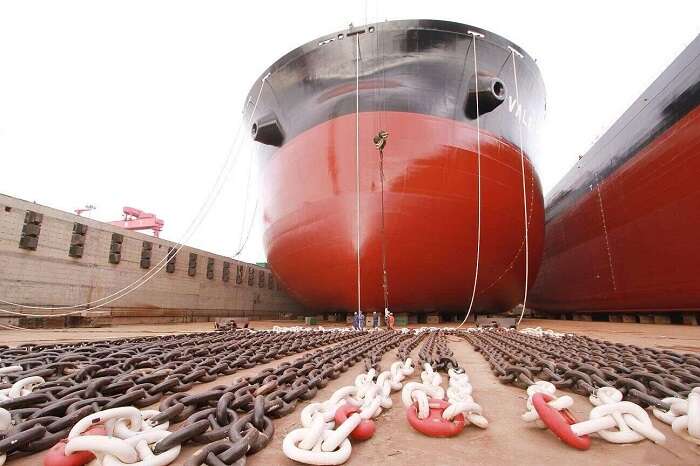
Clarksons: Shipbuilding Cycles – What Can Be Learnt from The Past?:
Jul-04,2017The current situation in the shipbuilding industry, characterized by the trough in newbuilding orders, will improve if contracting levels increase, according to Clarksons Research.
Trade growth, the replacement of older, less efficient ships and stricter environmental regulations could support yard capacity in the future through a recovery in newbuild demand.
Shipping is a cyclical industry and for shipyards, the current situation has put further pressure on capacity. While the scale of the current surplus appears huge, this is not the first time that the shipbuilding industry has grappled with excess capacity, Clarksons noted.
The shipbuilding industry has a habit of ramping up production capacity rapidly. In 2010, shipyards broke all previous delivery records, outputting 53.2m CGT (in dwt and GT terms deliveries peaked in 2011). Compared to 2004, early into the most recent ordering boom, this was a 122% increase in deliveries.
Looking back to the mid-1970s, there was a similar burst of activity as strong newbuild demand saw yard output double between 1972 and 1976 to 10.2m CGT.
As in the late 1970s, economic downturn and its impact on the shipping markets led to a significant fall in yard deliveries after their peak in 2010. The initial decrease in output was faster and sharper in the 1970s, with deliveries declining by 64% between 1976 (Year 0) and 1979 (Year 3), according to Clarksons.
The current cycle has seen a more gradual fall in deliveries, declining 34% between 2010 and 2014 with 178 yards reported to have completed delivery of their order books in 2012 (Year 2).
Shipyard output is still in decline. Though the surge in ordering in 2013 has helped support delivery volumes, current estimates are for an 18% fall in shipyard output in 2018. Many anticipate that the current delivery cycle will dip around 2019 (Year 9), suggesting a shorter cycle than before. It also seems unlikely that delivery levels will fall by as much as in the late 1980s, as the same pattern would imply a further 47% reduction in output from 2018 estimates to around 15m CGT.
After the 1970s crash, it took over a decade for shipbuilding output to recover. Today, following one of the weakest levels of newbuild contracting on record in 2016, the overcapacity which has characterized the global shipbuilding industry in recent years is even more prominent. While 353 shipbuilders currently have a vessel (1,000 GT or above) on order, almost half of these shipyards have failed to win a contract since the start of 2016, Clarksons said.
“If the current shipbuilding cycle were to follow the same pattern as in the 1970s, we would only be 7-8 years in, with a full recovery still some way away,” Clarksons noted.
“It seems unlikely that we have reached the bottom of the current cycle, and pressure to remove capacity remains. Shipbuilders will be hoping that newbuild demand drivers come through quickly to stem the duration of this particular downturn,” Clarksons concluded.
Source from http://worldmaritimenews.com
Send us your inquiry now
we would revert with you within 24 hours.
WELCOME TO CALL/EMAIL US
Tel: 0086-23-68428422/68428422/68428422
Fax: 0086-23-68428422/68428422/68428422
Email: sales@dqmarine.com
- Home
- Mooring Equipment
- Deck Machinery
- Marine Valve
- Marine Power & Propulsion System
- Service
- About Us
- Contact
DQ Marine Copyright 2015-2022, All Rights Reserved.





